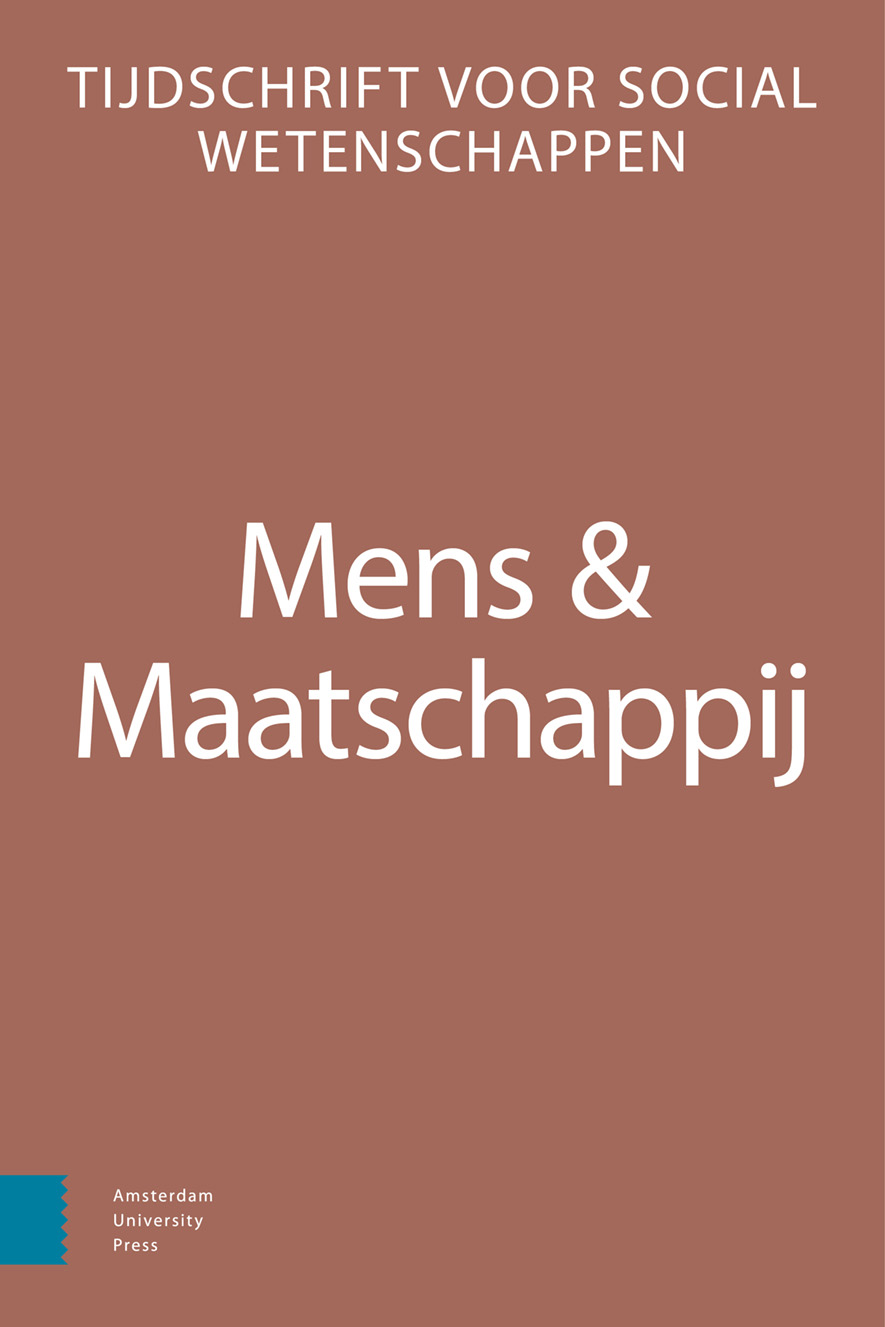- Home
- A-Z Publications
- Mens & Maatschappij
- Previous Issues
- Volume 91, Issue 3, 2016
Mens & Maatschappij - Volume 91, Issue 3, 2016
Volume 91, Issue 3, 2016
-
-
Werkloosheid doorstaan?
More LessAuthors: Tara Koster & Maurice GesthuizenSummaryCoping with unemployment: Longitudinal findings on how financial and social resources mediate and moderate the impact of unemployment on psychological distress
In this article we study changes in psychological distress caused by unemployment. We investigate to what extent diminishing financial (economic vulnerability) and social coping resources (social isolation) can explain why the persistently unemployed and persons who experienced a transition into unemployment experience an increase in psychological distress, compared to the persistently employed (mediation). Furthermore, we test the extent to which a stronger increase in the lack of financial and social coping resources magnifies the psychological distress increase due to unemployment (moderation). Longitudinal panel analyses on the two waves (2010 and 2014) of the NELLS-panel show that: (1) the persistently unemployed and people who experienced an unemployment transition experience more – and a significantly stronger increase in – psychological distress compared to the persistently employed, the persistently unemployed being in the most unfavorable situation, that: (2) an increase in economic vulnerability and in social isolation does not explain these differences but (3) does exercise an independent impact on increases in psychological distress and that: (4) an increasing lack of financial and social coping resources magnifies the increase in psychological disstress caused by unemployment. Due to cutbacks in national and local social security arrangements, the unemployed nowadays likely experience higher levels of, and stronger increases in psychological distress.
-
-
-
Vondelingen in Nederland
More LessAuthor: Kerstin van TiggelenSummaryFoundlings in the Netherlands: Actors and factors in the post-war debate
The post-war political and public debate on the foundling issue concentrates on whether or not to provide special arrangements for children (such as baby hatches) and mothers (such as anonymous births). In this article, I explore three research questions to establish the present positions within the Netherlands in this respect. Firstly, which actors and factors gave substance to the foundling debate. Secondly, how public, political and other actors relate(d) to these factors and each other. And thirdly, how these positions and possible position changes can be explained. The results show the number of actors to have increased over the years. Initially, four key factors were identified, which mark certain periods and positions. These are the risks for children and mothers (from 1967 on), the importance of family descent information (1984), the establishment of baby hatches in neighbouring countries (1999), and the introduction of foundling rooms (2011). Following more extensive analysis, abortion legislation has been shown to be a crucial, fifth factor in the early days of the debate as well (1967-1984). Based on these developments, it is not unthinkable that the Dutch situation might come to resemble the German model: against the law but permitted in practice.
-
-
-
Onderwijsdifferentiatie en leerlingproblemen in Nederland, 1916-2015
More LessAuthor: Ton MooijAbstractEducational differentiation and student problems in the Netherlands, 1916-2015: Review of problem analyses, research, and effects of policy measures
This review concentrates on problem analyses and research concerning educational differentiation and student problems carried out in the Netherlands between 1916 and 2015. The goal is to examine systemic educational causes of student achievement and motivation problems, to evaluate educational proposals to reduce these problems, and to check the effects of measures to reduce the problems in school practice. Results demonstrate the existence of four categories of educational differentiation and student problems: 1) age-based differentiation and systemic measures to reduce student problems; 2) age-based differentiation and non-systemic measures to reduce student problems; 3) special education for students with specific educational needs; 4) individualized education in specific schools. Review outcomes indicate a lack of permanent problem reduction in the first three categories in particular. It is suggested to systemically develop ‘Optimal Education’ for each student.
-
-
-
De invloed van kleine contexten op homonegatieve houdingen onder Nederlandse middelbare scholieren
More LessAuthors: Joris Blaauw & Wout UlteeAbstractEffects of small-scale settings on homonegativity among Dutch secondary school students
We model three forms of homonegativity among Dutch secondary school students: overall deprecation of same-sex love, dislike of kissing in public between two persons of the same sex, and keeping homosexuals at a distance. Guided by the hypothesis that stronger integration into any of society’s groups makes for more adherence to any of their norms, we estimate effects of individual education, ethnicity and sex, as well as several settings (contexts), like the composition of the student population of schools and their classes, a school’s sexual diversity program, friends, neighbourhoods, parents, and sport clubs. Parameters of cross-classified linear regression models show that education has a weaker impact than several settings. Students with gayfriendly parents and friends are more positive themselves, while students in classes with many homonegative students are more homonegative. Male, but not female, students who sport intensively are more homonegative. School programs on sexual diversity lower homonegativity of individual students by way of fewer homonegative classmates.
-
Volumes & issues
Most Read This Month


